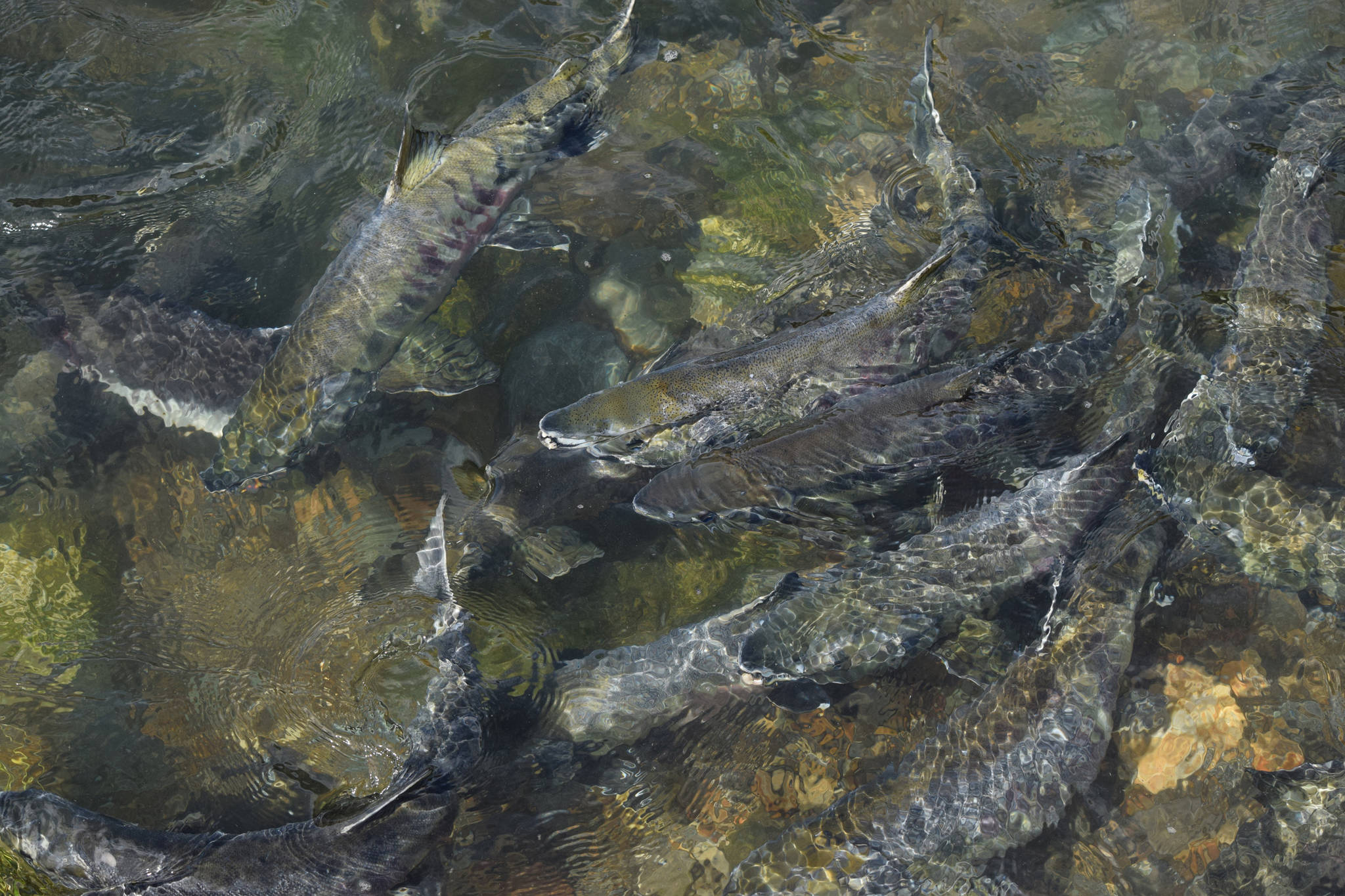Wild salmon stocks are under attack from all sides: ocean warming, habitat loss, over exploitation and pollution. While Alaska has enjoyed the benefit of good fisheries management, the cumulative impacts are taking their toll. Both professionals and non-professionals can see it in the watersheds around Southeast and in the salmon returns and harvests. One gillnetter moored across from me said he had only netted seven Taku sockeyes this season. Simply stated, the risks of kicking the salmon can down the road makes a yes vote on Ballot Measure 1 both critical and timely.
I’m a retired hydrologist and forest economist. At one time I worked with a fisheries economist and a fisheries biologist to illustrate the relative economic values of timber versus salmon along fish streams. Our findings helped support the 100-foot minimum, no-harvest forest buffers on salmon streams in the Tongass Timber Reform Act of 1990.
While the 100-foot no-harvest stream buffers were largely based on peer reviewed research, more current research recommends much larger buffers. This finding is also consistent with our original analysis. When we looked at pure economics, the break-even value between Coho salmon and streamside timber indicated the salmon stream buffers could be doubled (200 feet) and extended to smaller upstream tributaries to protect water quality. Nonetheless, the minimum 100-foot buffers were legislated, and even this standard was reduced to 60 feet for private Native Corporation logging.
Having salmon stream buffers is known as a Best Management Practice (BMP). Current habitat protections in Alaska rely primarily on applying a set of BMPs. While these protections are initially based on research that is then extrapolated over large regions, they come with one big promise that is rarely fulfilled — that the practices will be monitored and tested for their effectiveness. That requires systematic measurements and analyses to determine if the protections are working, and whether it is prudent to improve or relax the practice.
Unfortunately, monitoring in Alaska has not been comprehensive or rigorous — leaving the question of effectiveness in great doubt. In fact, monitoring is regularly reduced to simply recording whether a practice has been applied or not. The heroic assumption is that if a practice is applied, all is well. And in one worst-case example, I had a state forester tell me he was the professional and his opinion/proclamation on adequate protections made it so. Well, I’m a professional as well and “that dog won’t hunt.” Current practices fall short of new science, and better safeguards are in order. More specifically, we need the science-based standards for protecting habitat in Ballot Measure 1. This would make the state and industry much more transparent and accountable.
Lastly the mining industry, Native corporations and others are spending nearly $10 million to defeat the pro-salmon Ballot Measure 1. Why? They have enjoyed higher profit margins at the expense of salmon and simply do not want to give that up. Moreover, some of the same entities are wrongly conflating any economic tradeoffs as greatly diminishing or eliminating development.
Ironically, the bulk of their economic benefits resides outside Alaska. Some are even claiming it is an outside environmental plot — pure nonsense. More importantly, Tongass salmon are the epitome of Alaskan interests, with a commercial fishing value of over $400 million annually. The choice before us is not mutually exclusive — we can have both. But we must act or Alaska will become just another salmon casualty. This fall I urge everyone to vote yes on Ballot Measure 1 for salmon.
• Joe Mehrkens is a retired forest economist, hydrologist and resident of Petersburg and Juneau.
